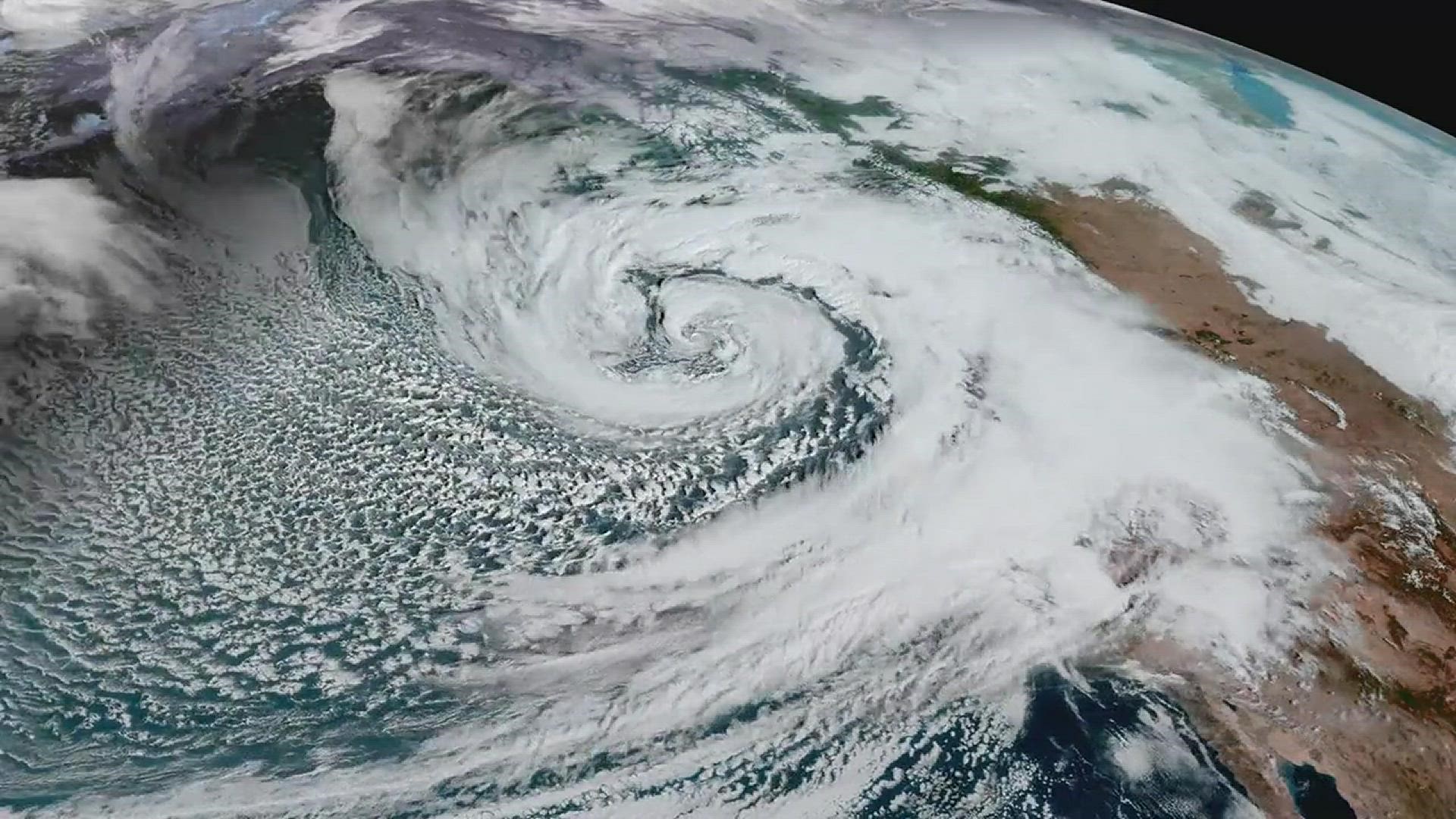Context
-
Recently, ‘Bomb cyclone’ hits eastern U.S., triggers transport chaos, outages.
Key Details
- The U.S. Eastern Seaboard is one of the regions where bombogenesis is most common.

Credit: KGW - That’s because storms in the midlatitudes—a temperate zone north of the tropics that includes the entire continental U.S.—draw their energy from large temperature contrasts. Along the U.S. East Coast during winter, there’s a naturally potent thermal contrast between the cool land and the warm Gulf Stream current.
What is Bomb Cyclone?
- A bomb cyclone is a large, intense midlatitude storm that has low pressure at its center, weather fronts and an array of associated weather, from blizzards to severe thunderstorms to heavy precipitation.
- It becomes a bomb when its central pressure decreases very quickly—by at least 24 millibars in 24 hours.
- When a cyclone “bombs,” or undergoes bombogenesis, this tells us that it has access to the optimal ingredients for strengthening, such as high amounts of heat, moisture and rising air.
- Most cyclones don’t intensify rapidly in this way. Bomb cyclones put forecasters on high alert, because they can produce significant harmful impacts.
How does it occur?
- Over the warmer ocean, heat and moisture are abundant.
- But as cool continental air moves overhead and creates a large difference in temperature, the lower atmosphere becomes unstable and buoyant.
- Air rises, cools and condenses, forming clouds and precipitation.
Visit Abhiyan PEDIA (One of the Most Followed / Recommended) for UPSC Revisions: Click Here
IAS Abhiyan is now on Telegram: Click on the Below link to Join our Channels to stay Updated
IAS Abhiyan Official: Click Here to Join
For UPSC Mains Value Edition (Facts, Quotes, Best Practices, Case Studies): Click Here to Join
